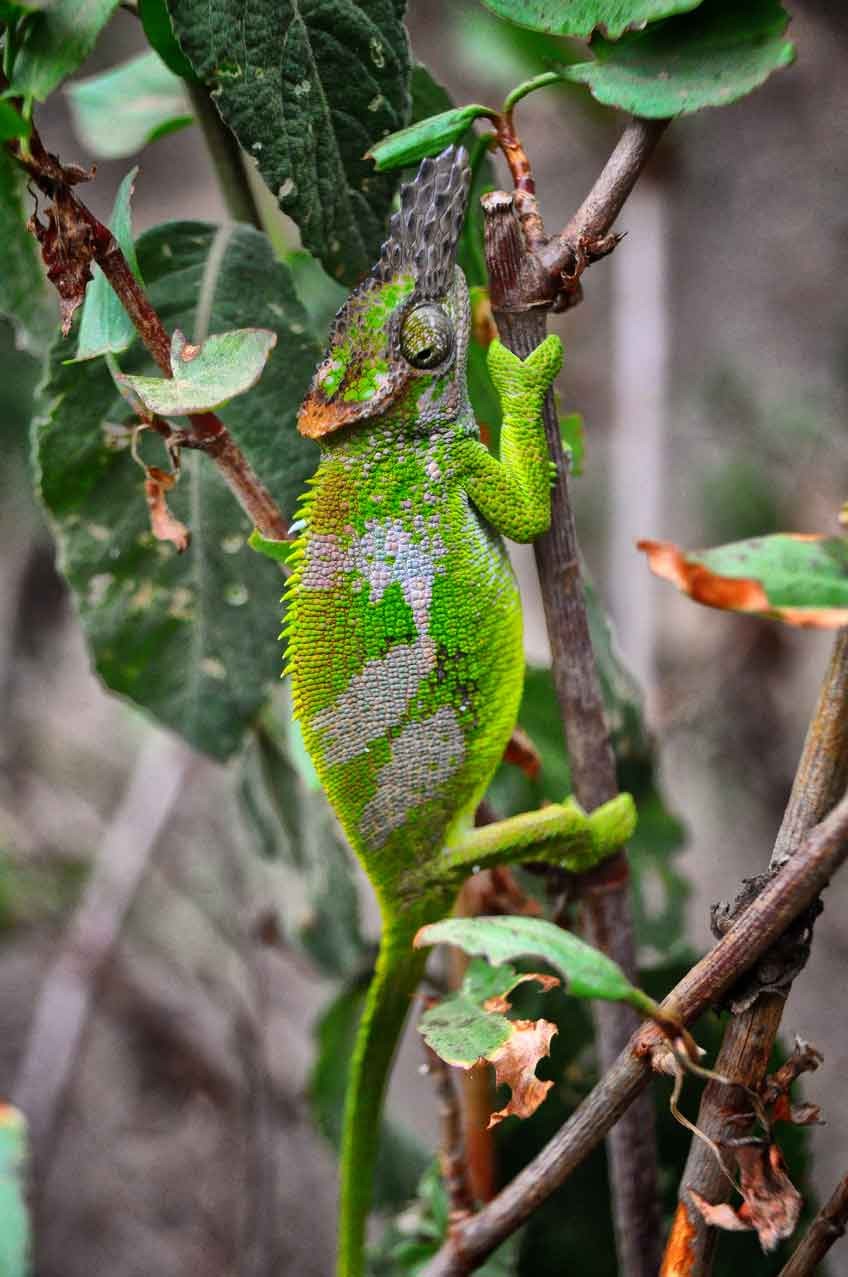West usambara two-horned chamaeleon
A species of Kinyongia Scientific name : Kinyongia multituberculata Genus : Kinyongia
West usambara two-horned chamaeleon, A species of Kinyongia
Scientific name: Kinyongia multituberculata
Genus: Kinyongia
Content
Description General Info
 Photo By Rod Waddington , used under CC-BY-SA-2.0 /Cropped and compressed from original
Photo By Rod Waddington , used under CC-BY-SA-2.0 /Cropped and compressed from original Description
The West Usambara two-horned chameleon or West Usambara blade-horned chameleon (Kinyongia multituberculata) is a chameleon endemic to the West Usambara Mountains of Tanzania. Until 2008, it was generally confused with Fischer's chameleon (K. fischeri), which is not found in the Usambara Mountains. Another related species, K. vosseleri, occurs in the same range as K. multituberculata, while K. matschiei is restricted to the East Usambaras.
General Info
Lifespan
12-15 years
Diet
West usambara two-horned chamaeleon primarily feeds on a diet of invertebrates. It shows particular preference for small arthropods and gastropods, excavated with precision from leaf litter and understory vegetation.
Appearance
West usambara two-horned chamaeleon is a medium-sized chameleon, characterized by its complex arrangement of nasal protrusions. Its rough skin transforms from green to brown, effectively camouflaging it in foliage. Uniquely, males display a series of tubercles running down their back, absent in females. This species’ most striking feature is its bifurcated rostrum, a pair of horn-like protrusions above the nose.
Behavior
West usambara two-horned chamaeleon is a solitary creature with territorial habits. It typically uses horns to establish dominance and defend territory. Males are known for their unique ritual displays during mating season. It is primarily arboreal, utilizing its multi-hued scales for effective camouflage within its mountainous habitat.
Population
Decreasing